
Kevin Norwood Bacon is an American actor. Known for his leading man and character roles, Bacon has received numerous accolades, including a Golden Globe Award, a Screen Actors Guild Award, and a nomination for a Primetime Emmy Award.

Total Recall is a 1990 American science-fiction action film directed by Paul Verhoeven, with a screenplay by Ronald Shusett, Dan O'Bannon, and Gary Goldman. The film stars Arnold Schwarzenegger, Rachel Ticotin, Sharon Stone, Ronny Cox, and Michael Ironside. Based on the 1966 short story "We Can Remember It for You Wholesale" by Philip K. Dick, Total Recall tells the story of Douglas Quaid (Schwarzenegger), a construction worker who receives an implanted memory of a fantastical adventure on Mars. He subsequently finds his adventure occurring in reality as agents of a shadow organization try to prevent him from recovering memories of his past as a Martian secret agent aiming to stop the tyrannical regime of Martian dictator Vilos Cohaagen (Cox).

Sleepy Hollow is a 1999 gothic supernatural horror film directed by Tim Burton. It is a film adaptation loosely based on Washington Irving's 1820 short story "The Legend of Sleepy Hollow", and stars Johnny Depp and Christina Ricci, with Miranda Richardson, Michael Gambon, Casper Van Dien, Christopher Lee and Jeffrey Jones in supporting roles. The plot follows police constable Ichabod Crane (Depp) sent from New York City to investigate a series of murders in the village of Sleepy Hollow by a mysterious Headless Horseman.
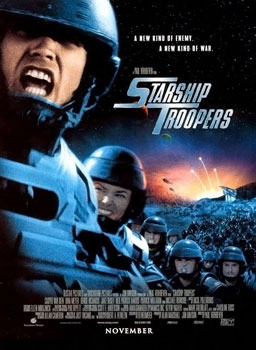
Starship Troopers is a 1997 American science fiction action film directed by Paul Verhoeven and written by Edward Neumeier, based on the 1959 novel of the same name by Robert A. Heinlein. Set in the 23rd century, the story follows teenager Johnny Rico and his friends serving in the military of the United Citizen Federation, an Earth world government engaged in interstellar war with an alien species of Arachnids. The film stars Casper Van Dien, Dina Meyer, Denise Richards, Jake Busey, Neil Patrick Harris, Patrick Muldoon, and Michael Ironside.

The Mummy is a 1999 American action-adventure film written and directed by Stephen Sommers, starring Brendan Fraser, Rachel Weisz, John Hannah and Arnold Vosloo in the title role as the reanimated mummy. It is a remake of the 1932 film of the same name. The film follows adventurer Rick O'Connell as he travels to Hamunaptra, the City of the Dead, with librarian Evelyn Carnahan and her older brother Jonathan, where they accidentally awaken Imhotep, a cursed high priest with supernatural powers.

RoboCop is a 1987 American science fiction action film directed by Paul Verhoeven and written by Edward Neumeier and Michael Miner. The film stars Peter Weller, Nancy Allen, Daniel O'Herlihy, Ronny Cox, Kurtwood Smith, and Miguel Ferrer. Set in a crime-ridden Detroit in the near future, RoboCop centers on police officer Alex Murphy (Weller) who is murdered by a gang of criminals and revived by the megacorporation Omni Consumer Products as the cyborg law enforcer RoboCop. Unaware of his former life, RoboCop executes a campaign against crime while coming to terms with the lingering fragments of his humanity.

Basic Instinct is a 1992 neo-noir erotic thriller film directed by Paul Verhoeven and written by Joe Eszterhas. Starring Michael Douglas, Sharon Stone, George Dzundza, Jeanne Tripplehorn, and Wayne Knight, the film follows San Francisco police detective Nick Curran (Douglas) as he investigates the brutal murder of a wealthy rock star. During the course of the investigation, Curran becomes entangled in a passionate and intense relationship with Catherine Tramell (Stone), an enigmatic writer and the prime suspect.

Elisabeth Shue is an American actress. She is best known for her roles in the films The Karate Kid (1984), Adventures in Babysitting (1987), Cocktail (1988), Back to the Future Part II (1989), Back to the Future Part III (1990), Soapdish (1991), The Saint (1997), Hollow Man (2000), Piranha 3D (2010), Battle of the Sexes (2017), Death Wish (2018) and Greyhound (2020). For her performance in Leaving Las Vegas (1995), Shue was nominated for the Academy Award for Best Actress as well as a BAFTA, Golden Globe and SAG Award.

Dinosaur is a 2000 American live-action/animated adventure film produced by Walt Disney Feature Animation in association with The Secret Lab, and released by Walt Disney Pictures. The film was directed by Ralph Zondag and Eric Leighton and produced by Pam Marsden, from a screenplay written by John Harrison, Robert Nelson Jacobs, and Walon Green, and a story by the trio alongside Zondag and Thom Enriquez. It features the voices of D. B. Sweeney, Alfre Woodard, Ossie Davis, Max Casella, Hayden Panettiere, Samuel E. Wright, Julianna Margulies, Peter Siragusa, Joan Plowright, and Della Reese. The story follows a young Iguanodon who was adopted and raised by a family of lemurs on a tropical island. After surviving a devastating meteor shower, the family moves out for their new home and befriends a herd of dinosaurs along the way while on a journey to the "Nesting Grounds". However, they face harsh circumstances with its Darwinistic leader while being hunted down by numerous predators, such as Carnotaurus.
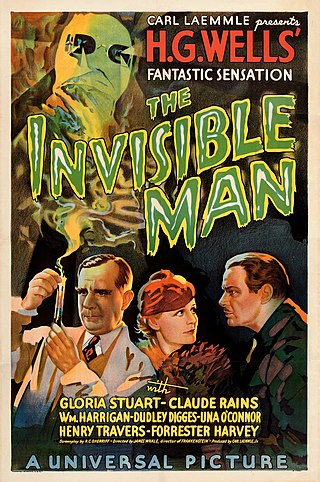
The Invisible Man is a 1933 American science fiction horror film directed by James Whale based on H. G. Wells' 1897 novel, The Invisible Man, produced by Universal Pictures, and starring Gloria Stuart, Claude Rains and William Harrigan. The film involves a Dr. Jack Griffin (Rains) who is covered in bandages and has his eyes obscured by dark glasses, the result of a secret experiment that makes him invisible, taking lodging in the village of Iping. Never leaving his quarters, the stranger demands that the staff leave him completely alone until his landlady and the villagers discover he is invisible. Griffin goes to the house of his colleague, Dr. Kemp and tells him of his plans to create a reign of terror. His fiancée Flora Cranley, the daughter of his employer Dr. Cranley, soon learn that Griffin's discovery has driven him insane, leading him to prove his superiority over other people by performing harmless pranks at first and eventually turning to murder.

Tarzan is a 1999 American animated coming-of-age adventure comedy-drama film produced by Walt Disney Feature Animation and released by Walt Disney Pictures. It is based on the 1912 story Tarzan of the Apes by Edgar Rice Burroughs, being the first animated major motion picture version of the story. The film was directed by Kevin Lima and Chris Buck and produced by Bonnie Arnold, from a screenplay by Tab Murphy and the writing team of Bob Tzudiker and Noni White. It stars the voices of Tony Goldwyn, Minnie Driver, Glenn Close, Rosie O'Donnell, Brian Blessed, Lance Henriksen, Wayne Knight, and Nigel Hawthorne.

Griffin, also known as the Invisible Man, is a fictional character who first appeared as the protagonist of H. G. Wells' 1897 science fiction novel The Invisible Man. In the original work, Griffin is a scientist whose research in optics and experiments into changing the human body's refractive index to that of air results in him becoming invisible. After becoming invisible, he wraps his head in bandages and dons a pair of goggles or glasses in order to enable others to see him. Unable to reverse the invisibility process, he descends into insanity and becomes a criminal.

The Floorwalker is a 1916 American silent comedy film, Charlie Chaplin's first Mutual Film Corporation film. The film stars Chaplin, in his traditional Tramp persona, as a customer who creates chaos in a department store and becomes inadvertently entangled in the nefarious scheme of the store manager, played by Eric Campbell, and the store's floorwalker, played by Lloyd Bacon, to embezzle money from the establishment.

Memoirs of an Invisible Man is a 1992 American comedy-drama film directed by John Carpenter and starring Chevy Chase, Daryl Hannah, Sam Neill, Michael McKean and Stephen Tobolowsky. The film is loosely based on Memoirs of an Invisible Man, a 1987 novel by H.F. Saint. According to screenwriter William Goldman's book Which Lie Did I Tell?, the film was initially developed for director Ivan Reitman; however, this version never came to fruition, due to disagreements between Reitman and Chase. The film was a critical and commercial failure.
Tippett Studio is an American visual effects and computer animation company specializing in computer-generated imagery (CGI) for films and television commercials. The studio has created visual effects and animations on over fifty feature films and commercials, garnering an Academy Award, four Clio Awards and two Emmy Awards. The company currently consists of approximately 150 employees, with offices located in Berkeley, California.
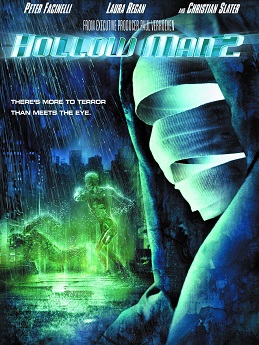
Hollow Man 2 is a 2006 American science fiction horror film directed by Claudio Fäh and starring Peter Facinelli, Laura Regan and Christian Slater. In the film a government experiment goes wrong leaving soldier Michael Griffin (Slater) permanently invisible. When his health starts to deteriorate he goes after the scientists who ruined his life. It is the stand-alone sequel to the 2000 film Hollow Man, released direct-to-video on May 23, 2006.
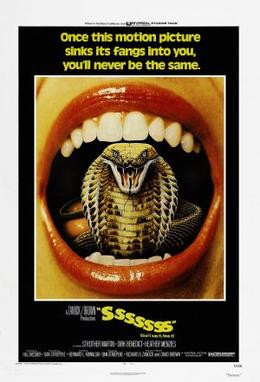
Sssssss is a 1973 American horror film starring Strother Martin, Dirk Benedict and Heather Menzies. It was directed by Bernard L. Kowalski and written by Hal Dresner and Daniel C. Striepeke, the latter of whom also produced the film. The make-up effects were created by John Chambers and Nick Marcellino. It received a nomination for the Best Science Fiction Film award of the Academy of Science Fiction, Fantasy & Horror Films in 1975.
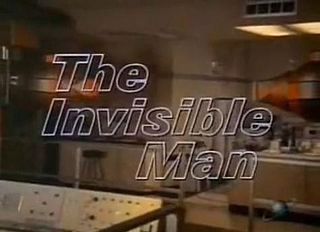
The Invisible Man, the second television series with this title, debuted in the US in 1975 on NBC and starred David McCallum as the scientist Daniel Westin and Melinda Fee as his wife, Dr. Kate Westin. The series was created by Harve Bennett. A pilot TV movie initially aired in May 1975 and was followed by a 12-episode series later that year. A TV tie-in novel based on the script of the pilot episode was written by Michael Jahn and published by Fawcett Gold Medal in 1975.

Craig Barron is an American visual effects artist and creative director at Magnopus, a media company that produces visual development and virtual production services for motion pictures, television, museums and multimedia platforms.

Rise of the Planet of the Apes is a 2011 American science fiction action film directed by Rupert Wyatt and written by the writing team of Rick Jaffa and Amanda Silver. It is a reboot of the Planet of the Apes film series and its seventh installment overall. The film stars James Franco, Freida Pinto, John Lithgow, Brian Cox, Tom Felton, and Andy Serkis. In the film, Caesar (Serkis), a chimpanzee genetically enhanced and raised by William Rodman (Franco), goes from living in captivity to eventually leading an ape uprising against humanity.



















